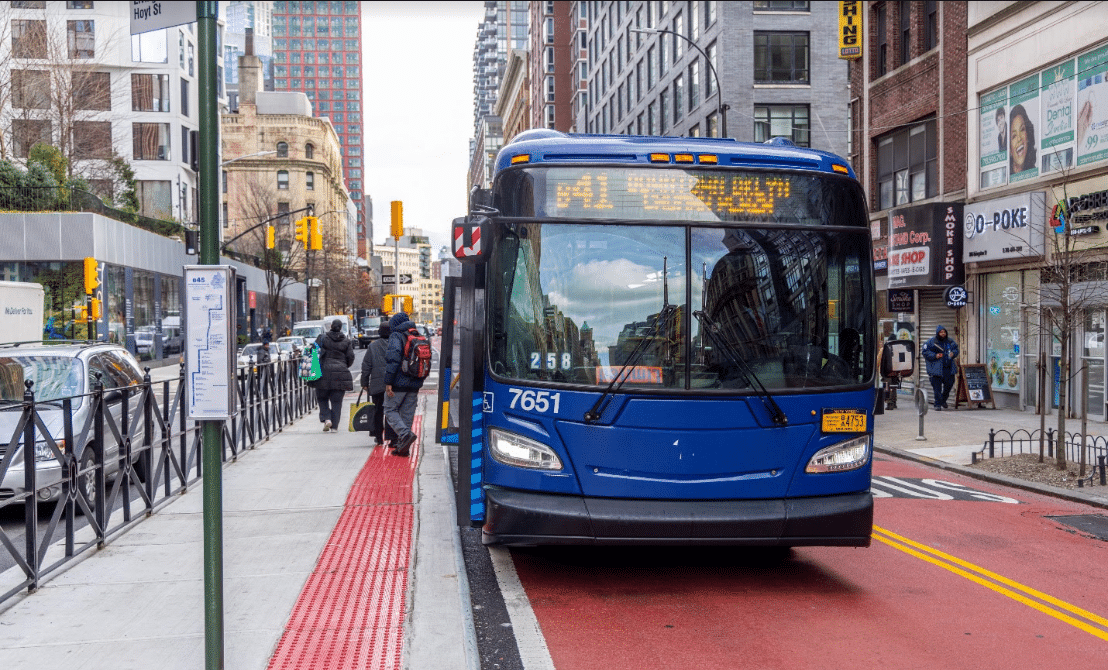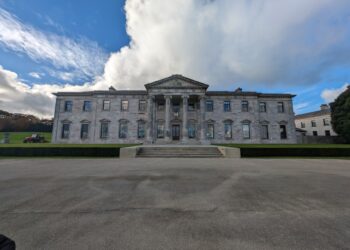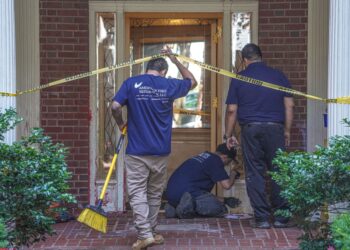A B41 bus stops for passengers at an island platform on the new Livingston Street busway.
NYC DOT
The city’s Department of Transportation has finished building a new busway on Livingston Street in Brooklyn, aiming to speed up several routes that use the Kings County thoroughfare.
The Downtown Brooklyn east-west street previously hosted two-way motor vehicle traffic with set-aside bus lanes, but now hosts one-way westbound traffic to make space for two directions of physically-separated red lanes exclusively for use by city buses. The street is used by four bus lines — the B41, B45, B67, and B103 — which collectively serve 50,000 riders daily, according to DOT, and all putter along at slow speeds as they get stuck in traffic and behind double-parked cars.
The new busway is separated from motor vehicle traffic by a concrete island where riders can board eastbound buses, preventing cars from blocking bus traffic.
“Our redesign of Livingston Street has transformed what was a congested, double-parked corridor into two-way fully protected and dedicated bus lanes to get bus riders where they’re going faster — while also preserving access and enhancing safety for everyone,” said DOT Commissioner Ydanis Rodriguez in a statement. “Bus riders deserve fast and reliable service so that they spend less time in transit and more time with their families and friends, or at important appointments.”
Three of the four buses using Livingston Street log speeds below the average for Brooklyn and the city at large, which already has the nation’s most sluggish buses. The slowest is the B45, which recorded a pitiful 5.9 miles-per-hour average speed in November, according to MTA statistics.
Busways, which can also be seen on Fulton Street in Brooklyn, 14th Street in Manhattan, and Jamaica Avenue in Queens, among other places, dramatically increase bus speeds. After the city implemented the 14th Street busway in 2019, commute times were slashed dramatically for…
Read the full article here








